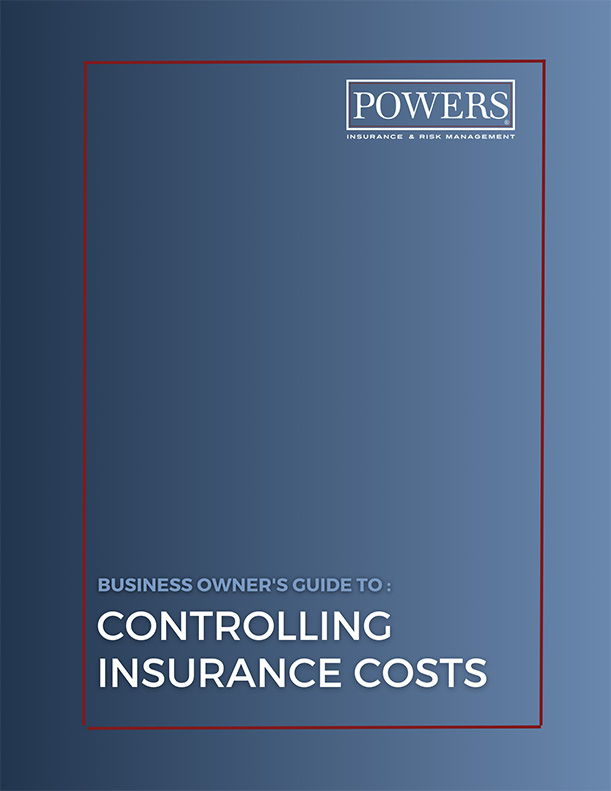Whether creating a workplace safety program from scratch or just revisiting it, your first priority should be establishing or improving your organization’s safety culture.
In this guide, we’ll cover the following points and in the coming weeks, POWERS will continue to post additional deep dives into each of the below topics. You can find all POWERS Research and Industry insights here.
- Why every business needs a workplace safety program
- How to Build a Safety Culture (or Make Yours Even Better)
- How to Identify Hazards with a Risk Assessment Framework
- Safety Program Development: How to Create and Implement Policies
- Incident Investigation: How to Stop Future Safety Incidents
- Safety KPIs to Track for Continuous Improvement
- Top Safety Policies and Procedures for Any Business
Whether creating a workplace safety program from scratch or just revisiting it, your first priority should be establishing or improving your organization’s safety culture.
Why? The best risk assessments and safety policies in the world won’t make a difference if they lack conviction and your employees don’t believe it.
To foster a successful safety culture that saves lives and impacts the bottom line, every business needs three things:
- A commitment from leadership
- Employee buy-in
- Enduring consistency
Let’s dig into why these are so important and our top tips to achieve them.
Leadership commitment
Your company’s commitment to safety starts at the very top – not with a compliance director or safety manager. That means your founder, president, and/or CEO should be publicly discussing safety on a regular basis.
This clearly communicates your commitment to safety and establishes it as a top priority.
Of course, talk will only get you so far. Your employees will also need to see action from company leadership. Here’s what they’ll look for.
Leading by example
Everyone, from team leads to the CEO, absolutely must follow safety rules every time. Nothing kills a rule’s efficacy faster than a “rules for thee, not for me” attitude. If leaders exhibit unsafe behaviors or let them slide, you can kiss the positive safety culture goodbye.
Prioritizing safety over productivity
While safety and productivity often go hand-in-hand, all employees must also see that safety comes first even when it’s not convenient. Create space for workers to bring up safety concerns. Most importantly, implement a “stop work” policy empowering every employee to stop work on the spot if they notice unsafe conditions.
Investing in safety
There’s no way around it: Safety costs money upfront. Budget for repairs, maintenance, and PPE replacements. Invest in these safety measures before they become critical. Employees will notice (and typically appreciate it).
Safety shouldn’t be a compliance checkbox or a “song and dance” with no practical follow-through. It should be a true core value, in public and behind closed doors.
Employee buy-in
Although a strong safety culture may start as a top-down initiative, it doesn’t have to be solely dictated by leadership. The best way to foster employee engagement is to empower employees to help shape the safety program they operate in.
The more opportunities available to employees to get involved in safety, the better. Here are some ideas to generate engagement.
Encourage hazard and near-miss reporting
Providing multiple channels for hazard reporting, including online, paper forms, and face-to-face discussions with a supervisor. Provide at least one anonymous channel where giving a name is optional.
Engage tenured and respected employees
You’ll find some of the most passionate safety advocates are already within your workforce. Ask tenured workers to share their own stories or advice during safety meetings. Hearing about real experiences from someone they work alongside can have a huge impact on employees and the empathy required to relate.
Form a safety committee
Allow everyone to be involved. Your safety committee should include employee representation from a variety of roles, tenures, and functions.
Recognize and reward employees who contribute to your safety culture
Recognizing safe employees is powerful. Be sure to focus on proactive safety measures and incident reporting, as rewarding “zero accidents” can incentivize employees to hide potential hazards or safety incidents.
Consistency is your master key
The purpose of starting with a culture of safety is to empower you to start strong – but start simple.
Implementing 25 new rules, procedures, meetings, and safety initiatives tomorrow will be overwhelming for employees and unsustainable for company leaders.
If you’re working with a very basic or nonexistent safety program, start with the fundamentals, such as:
- Communicate the importance of safety to employees
- Identify and address your company’s top 3-5 safety hazards
- Put your top 3-5 safety policies in writing and have employees sign them
Commit to these foundational safety goals for six months or more until they’re truly cemented in your entire organization. Then, revisit this guide to look for ways to make the safety program even more robust.
Most importantly, maintain consistency in your implementation. The rules must apply to every single person, every single time. Over time, employees will see that this is your way of doing business.
Safety culture FAQs
Why is it important to build a safety culture?
An effective safety culture creates an environment where safety procedures and policies are most likely to succeed and impact your business. If an employee doesn’t believe in your commitment to safety, they’re less likely to take the rules seriously. Starting with the culture sets the stage for the future development of any safety program.
What are the benefits of a strong safety culture?
A strong safety culture enables your safety program’s success. A successful safety program has many benefits, including but not limited to:
- Increased productivity and morale
- Recruiting and retaining the best talent
- Strong brand reputation and customer trust
- Lower workers’ comp premium
And, of course, the ultimate benefit of protecting your employees’ well-being.
How can I engage employees in shaping our company culture?
Engaging employees in your culture means creating an inclusive environment where their voices are heard. Our top four tips to achieve this are:
- Encourage hazard and near-miss reporting
- Engage tenured and respected employees
- Form a safety committee
- Recognize and reward employees who contribute to your safety culture
A successful safety program takes a village
Preventing workplace injuries is an investment worth making. However, those resources can quickly add up. Explore your options for outsourcing safety support where you can. Does your workers’ comp carrier provide resources? How about your Insurance agent?
All POWERS clients have access to safety training and program development experts as a value-add. It’s all about helping you protect your people and reduce insurance costs without huge in-house expenses. Find out how our experts can help you protect your employees, reduce costs, and boost your return on safety by scheduling a free consultation today.





